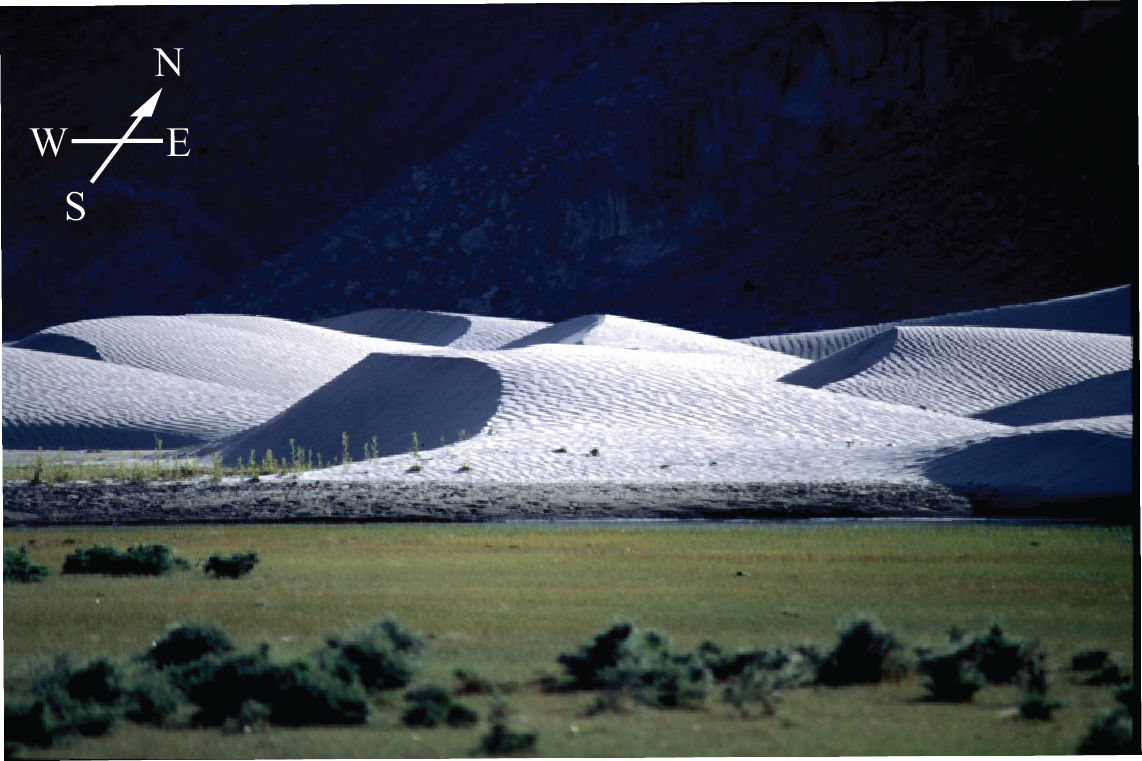| Date | November 2011 | Marks available | 1+2+1 | Reference code | 11N.2.bp.5 |
| Level | SL and HL | Paper | 2 | Time zone | |
| Command term | Identify and State | Question number | 5 | Adapted from | N/A |
Question
The photograph shows an arid landscape.

[Source: Trevor Cole ©www.coleimages.com]
(i) Name the landform in the background of the photograph.
(ii) State two processes of wind transport found in areas such as this.
(iii) State the direction from which the wind normally blows.
Explain the occurrence of flash floods in areas like the one shown in the photograph.
“The opportunities for tourism outweigh the challenges.” Discuss this statement with reference to one extreme environment.
Markscheme
(i) Barchan dune or sand dunes or erg (also accept sand sea).
(ii) Responses should identify two of the following processes: suspension, saltation, rolling/traction of sediments.
(iii) East.
Rainfall intensity [1 mark] exceeds infiltration capacity [1 mark] generating surface runoff/overland flow/flooding [1 mark].
Award additional marks for extra detail of the processes and/or the factors promoting them in an arid environment, for example, summer convection rainfall; unvegetated desert surfaces thus less interception and infiltration; concentrations of water in wadis, gullies or channels; presence of desert crusts and other barriers to infiltration.
Answers should examine both opportunities and challenges for tourism in either “cold and high altitude environments” or “hot, arid environments”.
In desert regions the opportunities may focus on scenery (dunes, salt flats, canyon lands), indigenous culture and outdoor pursuits, for example. Challenges may include extremes of temperature, accessibility, water shortages and a lack of resources to sustain tourism.
In cold or high altitude regions opportunities may focus on skiing and other outdoor activities, scenery and the indigenous people who inhabit such regions. The challenges may include remoteness, power supply, access and the mitigation of natural hazards such as landslides and avalanches.
While examples are not a specific requirement of the question, those answers that provide supporting examples are likely to access the higher markbands. At least two opportunities and challenges should be given for the chosen environment but the marks need not be allocated equally. For band E and above a clear conclusion is expected.
Marks should be allocated according to the markbands.
Examiners report
Most candidates could identify sand dunes in part (a)(i) but at standard level few were able to accurately state two processes of wind transport in (a)(ii).
Very few answers adequately explained the occurrence of flash floods.
Responses were generally relevant, but the "challenges" were often poorly covered and many answers simply discussed the advantages and disadvantages of tourism in extreme environments without directly referring to challenges and opportunities afforded by the environment chosen.

